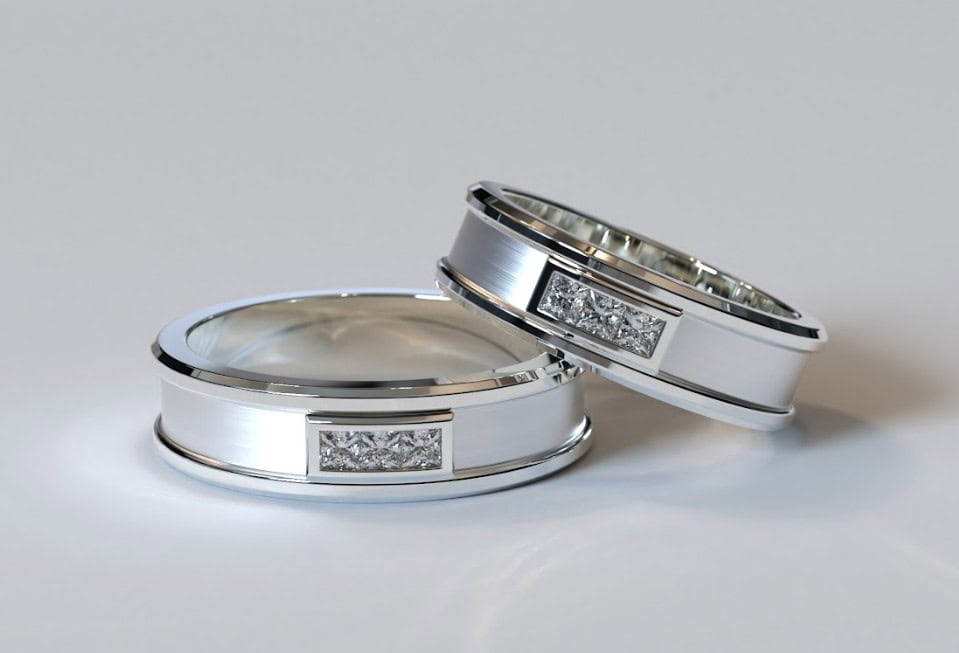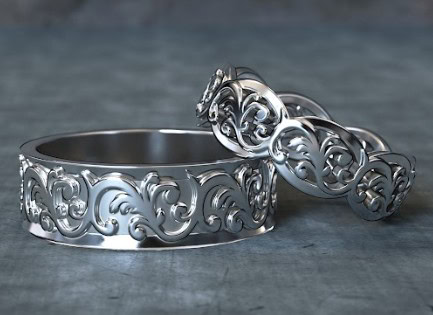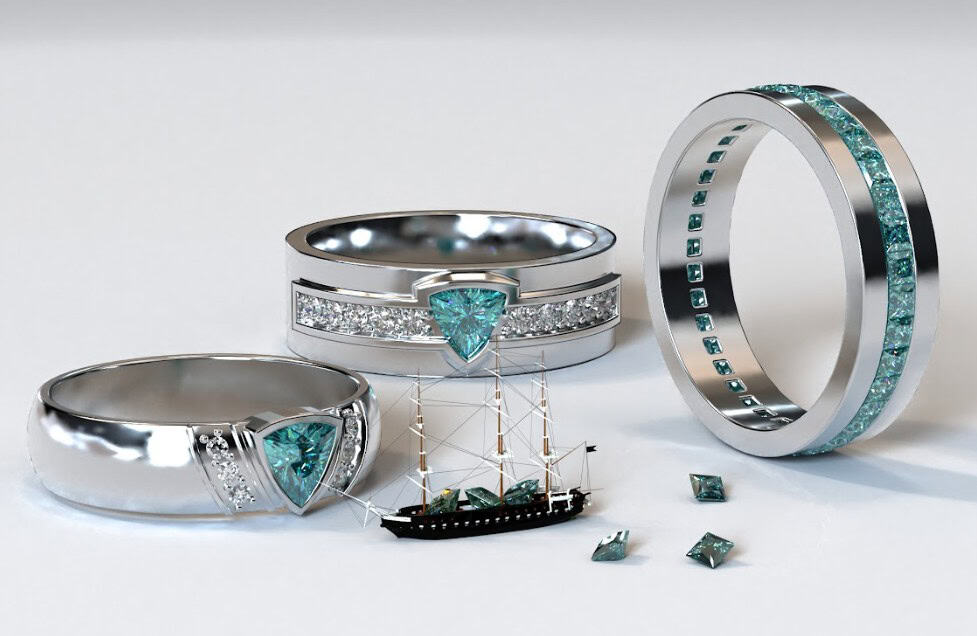You deserve the best! FREE worldwide shipping
You deserve the best! No shipping fees
You deserve the best! Holiday 10% off Coupon: 10off
Inspiring Men. Inspiring Fashion.
Choosing the right metal for your wedding or engagement piece is more than just a matter of taste—it’s a decision that shapes how you experience that jewelry for a lifetime. If you’ve been caught in the platinum vs white gold debate, you’re not alone. These two powerhouses of precious metal often look alike, but they perform very differently over time.
Vidar Jewelry works exclusively with the world’s most coveted materials—platinum, gold, and diamonds—to create custom designs that reflect your personality, status, and story. Before you pick the perfect band, let’s break down the real differences.

Because white gold is not naturally white, it gets a boost with a coating of rhodium, a bright, white metal that gives it that icy glow. Platinum, on the other hand, doesn’t need extra treatment. It looks exactly how it is, no extra layers or coatings.
Let’s start with what they’re made of:
Platinum: Naturally white, typically 95% pure platinum
White Gold: Made by mixing yellow gold with white metals like nickel, palladium, or silver
That plating looks fantastic when new, but fades with regular wear. Over time, you’ll likely notice yellowish tones resurfacing unless you keep up with re-plating.
At first glance, these metals can appear nearly identical. But as the years go by:
Want a piece that reflects your story? Check out our handcrafted white gold men’s rings.
Here’s the thing about white gold—it doesn’t stay that icy bright forever. That rhodium plating we mentioned earlier? It wears off. How fast depends on your lifestyle, but most people need to get their white gold jewelry re-plated every 12 to 18 months.
Rhodium adds brilliance and acts as a barrier, but once it fades, the yellowish tones underneath can start peeking through. That means maintenance. Polish. Replating. Repeat. Platinum? It keeps its color through and through—no topcoats necessary.
Pro Tip: If you lead an active lifestyle or work with your hands (we see you, real estate pros and creatives), platinum might save you some hassle.
Ever picked up a piece of platinum and thought, “Whoa, that’s solid”? That’s because platinum is about 60% heavier than white gold. It feels luxurious. Substantial. Like it belongs.
This added weight is a bonus for many of our clients who want something that feels powerful on hand, especially for men’s wedding bands or our signature Black Edition rings. That said, some folks prefer a lighter touch. If you’re more about subtle style, white gold might wear more comfortably.
Searching for a pair that strikes the perfect balance and makes a statement? Discover our collections for couples—his and hers, his and his, and more.
If your skin’s ever reacted to jewelry, this section’s for you. Nickel is a common allergen, and unfortunately, it often makes its way into white gold alloys. That means irritation, redness, and sometimes even rashes.
Platinum, by contrast, is naturally hypoallergenic. No nickel. No flare-ups. Just smooth sailing—even for those with sensitive skin. This makes platinum a top pick for our custom men’s engagement rings, especially when comfort matters just as much as style.

Both platinum and white gold hold up well, but they wear very differently. White gold tends to lose a little metal with every scratch, while platinum just shifts slightly. This means platinum builds a soft patina over time instead of thinning out.
Some guys love the aged, matte look platinum develops—a badge of honor, if you will. If you’re all about that fresh-out-of-the-box shine, though, white gold may be more your vibe (as long as you’re down for re-polishing).
Another thing to consider: resizing and repairs. Platinum is tougher to work with, but it’s more durable in the long run. White gold is easier to reshape, but repeated work can wear it down faster.
Let’s talk money. Platinum will usually cost more up front—thanks to its density, purity, and labor-intensive work required. But it also demands less upkeep. No rhodium re-coating. Less polishing. And fewer repairs over the years.
White gold, meanwhile, comes in at a lower initial cost. But when you factor in rhodium plating, regular maintenance, and possible allergic reactions (which could send you hunting for replacements), the price can catch up.
Choose quality that lasts a lifetime. Shop our platinum men’s wedding rings, where craftsmanship meets elegance.

How you wear your story starts with the metal you choose. Whether you’re all about sleek modern vibes or timeless elegance, both platinum and white gold have something to say.
Lately, more men are leaning into platinum for its rare, prestige appeal—especially in matching ring sets that tell a bold yet personal story.
If your jewelry is an extension of your journey, platinum might feel like the truest reflection of resilience and depth.
Fun Fact: Platinum is rarer than gold. So if you like your accessories to say “exclusive,” you know where to lean.
At the end of the day, the platinum vs white gold debate isn’t about which metal is objectively “better.”
It’s about what fits your life, your skin, your budget, and your story. No matter what you choose, know that at Vidar Jewelry, we specialize in creating high-end pieces that speak volumes without saying a word. Whether it’s a men’s engagement ring, a wedding band for him, or a matching set that captures your connection, we’re here to make it one-of-a-kind.
Both options are exceptional—especially when crafted by Vidar Jewelry. We don’t do ordinary. We do made-to-order jewelry that turns heads and holds meaning.
Start your next chapter with something crafted exclusively for you. Shop Vidar Jewelry’s men’s engagement rings and matching sets crafted in platinum and white gold.
It depends on your lifestyle and preferences. While platinum is tough and great for sensitive skin, white gold stands out for its lightweight feel and vivid shine.
Usually every 12 to 18 months, depending on wear. Without replating, it may begin to show yellowish undertones.
Platinum is denser. A platinum piece weighs about 60% more than the same piece in white gold.
Platinum wins here. It is allergy-friendly by nature, unlike white gold, which can include nickel, a known skin irritant.
It doesn’t scratch away; instead, the metal shifts. White gold loses some material with every scratch, while platinum just develops a soft patina.
White gold usually needs more frequent care, including replating and regular polishing. Platinum costs more upfront but may save you time and money over the years.
One of our team members will get back to you in 5 hours or less.










